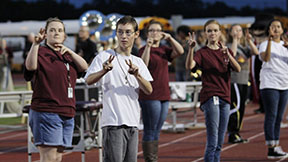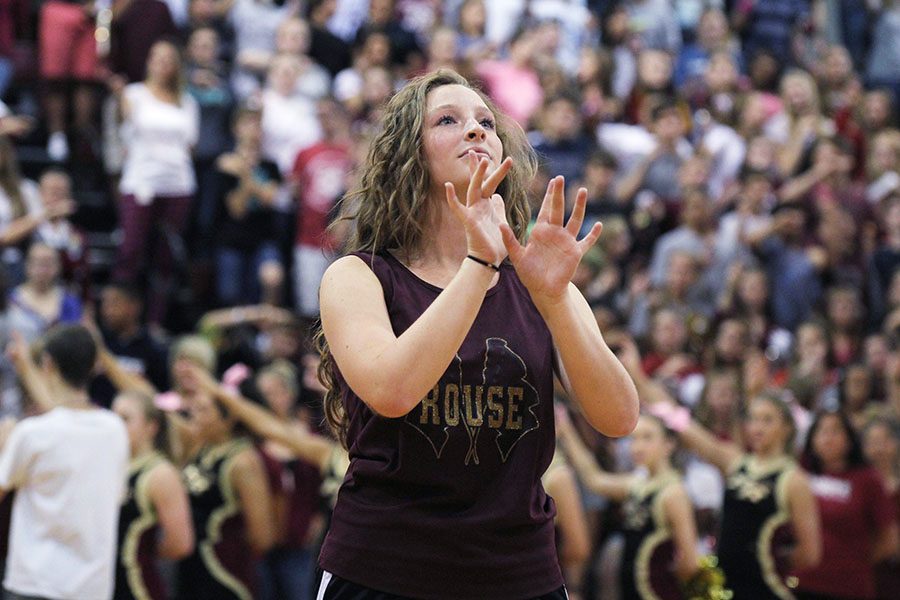ASL students learn art, language of signing
Jordyn Hayden signs the school song at the Homecomng pep rally.
November 26, 2015
Stumbling fingers. Confused faces. Loud classes. For such a silent language, it can be a rowdy day.
Tricia Penney’s American Sign Language classes struggle and excel in a culture only few understand.
“At first it was hard to learn because of knowing when and where the signs go, but when I figured it out it got easier,” sophomore Teddy Ruiz said.
Penney, who has been teaching ASL for four years, teaches ASL I-III.
“Silent classrooms are peaceful,” Penney said. “Also, seeing their faces when they understand me without using my voice, it’s amazing.”
According to National Institute on Deafness and other Communication Disorders in America, statistics show 90 percent of all deaf parents have hearing kids.
“I have a deaf uncle,” Ruiz said. “So I thought it would be cool to understand how he lives life and speak with him.”
For some people knowing to sign will help communicate with family. For senior Nicole Laird, it’s her future.

“I do plan on continuing it in the future to communicate with students if I become a teacher or psychologist,” Laird said.
Laird, as an ASL III student, had the opportunity to sign the national anthem at varsity football games. In the classroom, students learned other songs, choosing popular songs to sign to their peers. Through the ASL class, sophomore Courtney Gage learned through experience that the culture is different.
“The background of ASL surprised me, like how it came to America, how many people use sign language, and where it originated,” Gage said. “I’m amazed about how many deaf people there are in America.”
In addition to learning to sign Gage also has to keep in mind of facial expressions.
“They won’t know the meaning you’re trying to get across,” Gage said. “They could take it the wrong way. It’s basically the attitude of sign language.”
Not only Gage feels good about signing but good for taking the class
“I feel pretty good, actually I feel special,” Gage said. “Because a lot of people know different things, but I know the second most spoken language in the United States.”



